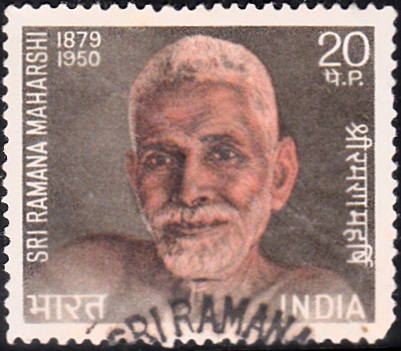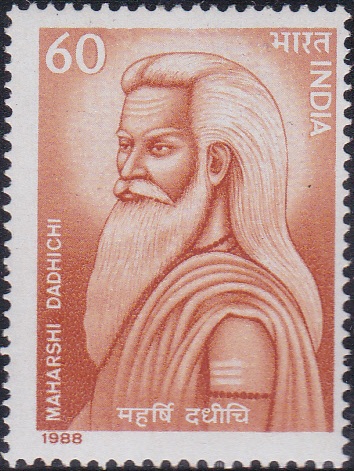
Maha Kumbh 2025
Complete set of 3 nos. of postage stamps on the Maha Kumbha Mela (the festival of the sacred pitcher) in Prayagraj :



 Issued by India
Issued by India
Issued on Feb 13, 2025
Issued for : Department of Posts is proud to release a Souvenir Sheet consisting three stamps on the holy occasion of Maha Kumbh 2025 – a pilgrimage of the soul that beckons to all who seek the divine within.
Credits :
Stamp/FDC/Brochure/Cancellation Cachet : Sh. Sankha Samanta
Type : Miniature Sheet, Mint Condition
Colour : Multi Colour
Denomination : 500 Paise (3)
Printed Souvenir Sheet : 2,12,750
Printing Process : Wet Offset
Printer : Security Printing Press, Hyderabad
About :
- The Maha Kumbh, a sacred congregation that unfolds every twelve years, is more than a spectacular gathering of millions – it is a spiritual odyssey that delves into the very essence of human existence.
- At the heart of the Maha Kumbh Mela lies a symbol steeped in cosmic significance – the “Kumbh” or sacred pot. This vessel, laden with symbolism, transcends its physical form to embody the human body and the quest for spiritual awakening. According to Hindu mythology, the Kumbh symbolizes the celestial pot that emerged during the churning of the cosmic ocean, containing the divine nectar known as “amrit”. Metaphorically, the Maha Kumbh represents the human form, and the nectar within symbolizes the spiritual essence intrinsic to every individual. The stamps are inspired from the famous verse :

- STAMP 1: Maharshi Bharadwaj Ashram
- Associated with Maharshi Bharadwaj Ashram, this place has been a revered religious site for centuries. During Maharshi Bharadwaj’s time, it was renowned as an educational centre. According to Ramayana and Purans, Shri Ram visited this place with Mata Sita and Lakshman while on his way to Chitrakoot during his Vanvas period. The famous Ramcharitmanas written by Tulasidas also begins from the Bharadwaj’s Ashram in the Balkand.
- Maharshi Bharadwaj was the author of numerous texts on subjects such as Grammar (Vyakaran), Ayurveda, Dhanurveda (Archery), Political Science (Rajneeti Shastra), Mechanics (Yantrasarvasva), Economics (Arthshastra), Purans, and Education, among others. However, today, only Yantrasarvasva and Shiksha (Education) are available. According to the Vayupuran, he wrote a book called Ayurveda Samhita, which was divided into eight parts and taught to his disciples. According to the Charak Samhita, he imparted the knowledge of Kayachikitsa (general medicine) to Atreya Punarvasu.
- Maharshi Bharadwaj received knowledge of Ayurveda and Savitr Agni Vidya (knowledge of the fire of Savitr) from Indra, and later, in a different era, from Lord Brahma. By absorbing the power of fire, the Maharshi attained the essence of immortality and ascended to the heavenly realms, where he gained union with Aditya (the Sun). (Taittiriya Brahman 3/10/11)
- Perhaps for this reason, Maharshi Bharadwaj was one of the longest-living sages. Maharshi Charak described him as one with an immeasurable lifespan. (Sutra Sthan 1/26).
- Today, the site is home to several temples, including the Bharadwajeshwar Mahadev, Maharshi Bharadwaj, Tirthraj Prayag and Devi Kali among others. Nearby, the beautiful Bharadwaj Park offers a serene atmosphere for visitors to relax and unwind.
- STAMP 2: Snan
- Prayagraj, the Tirthraj or ‘King of Pilgrimages’, is sanctified by the Triveni Sangam – the confluence of the Ganga, Yamuna, and the invisible Saraswati. According to ancient scriptures, bathing when Guru (Jupiter) enters Vrish Rashi purifies the soul and attains Moksha (Salvation) – known for hosting the Kumbh, and the Magh Mela annually. Prayagraj Kumbh is a mega event that features various rituals, with the Snan bathing ritual known as Tirth Snan being the most significant. The Ganga is considered the river of knowledge, the Yamuna is regarded as the symbol of devotion, Saraswati is the bestower of liberation (moksha), and Lakshmi grants wealth. Therefore, one who bathes at the Triveni Sangam of the three rivers Ganga, Yamuna, and the invisible Saraswati – attains knowledge, devotion, wealth and liberation (Moksha).
- Millions of pilgrims take part in the Kumbh Tirth Snan at the Triveni Sangam, performing this sacred ritual per the belief that by submerging oneself in the Sangam Jal, one is purified of all sins, releases oneself and their ancestors from the cycle of rebirth called Moksha, and they also ultimately attain their Moksha. Along with the Tirth Snan, pilgrims also camp on the banks of the holy river called Kalpvas and participate in discourses from various Sadhus, Tapasvis, and spiritual Mentors seeking spiritual enlightenment and guidance. The Kumbh Mela is a unique opportunity for devotees to connect with Sanatan discourses of harmony, and their spiritual heritage and seek Moksha.
- STAMP 3: Akshayvat
- The Akshayvat, also known as the immortal Banyan tree, is a sacred tree deeply rooted in Sanatan scriptures. This holds significant importance as it is believed to be the tree under which Shri Ram, Mata Sita and Lakshman, rested during their Vanvas. According to the Scriptures, the tree is immortal and has been a silent witness to the passage of time, making it a revered and sacred site for devotees and pilgrims. According to the Padma Puran, even during the period of cosmic dissolution (Pralay), the Akshayvat remains steadfast. For this reason, it is called Akshayvat (eternal).

- During the time of Pralay (cosmic dissolution), Lord Vishnu rests on its leaves, which is why it is called Akshay (eternal). Not only Maharshis did meditate under this tree, but even the gods and goddesses performed penance here. For this reason, this tree is considered the abode of all the deities. According to the Padma Puran, wherever the shadow of the Akshayvat falls, it generates divinity in humans and removes their sins and sufferings. Akshayvat is regarded as a witness to all actions (Karmas).
- The Akshayvat, also known as the immortal Banyan tree, is a sacred tree deeply rooted in Sanatan scriptures. This holds significant importance as it is believed to be the tree under which Shri Ram, Mata Sita and Lakshman, rested during their Vanvas. According to the Scriptures, the tree is immortal and has been a silent witness to the passage of time, making it a revered and sacred site for devotees and pilgrims. According to the Padma Puran, even during the period of cosmic dissolution (Pralay), the Akshayvat remains steadfast. For this reason, it is called Akshayvat (eternal).
- Text : Referenced from content provided by the proponent.
Subscribe
Login
0 Comments
Oldest







